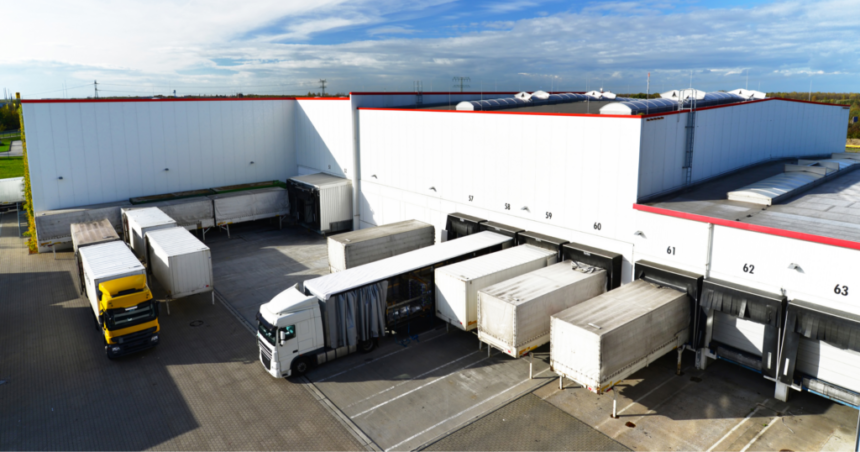Real estate investments are available in many shapes and sizes, including industrial real estate investing. This is not the most common form of real estate investing, but it has a lot of potential when done right, and can be a great opportunity to diversify your investments.
Understanding Industrial Real Estate
Investing in industrial real estate involves purchasing, managing, and eventually selling properties. Like residential real estate investing, the goal is a great ROI, but you’ll cater to industrial tenants versus people looking for a place to live.
Many renters looking for industrial space need distribution space, but not all do. The key is understanding the demographic where you plan to invest and their pain points.
Examples of industrial real estate
Some common usage examples include:
- Warehouses
- Distribution centers
- Showrooms
- Manufacturing plants
- Cold storage
- Flex space (hybrid between office and warehouse)
Reasons to Invest in Industrial Real Estate
There are many reasons to consider industry real estate investing, either instead of residential real estate investing or to expand your portfolio, including:
- High demand: The increase in e-commerce, internet technology like data centers, and manufacturing has greatly increased the need for industrial real estate space.
- Low vacancy rates: As of the fourth quarter of 2023, the national industrial real estate vacancy rates average 5.2% versus 6.6% for residential real estate.
- Long-term leases: Industrial lease terms span three to 15 years and usually have the option for rent escalation annually.
- Steady cash flow: Industrial tenants have predictable, consistent cash flow, which lowers your risk of a tenant defaulting and ensures regular cash flow.
- Resilience to economic downturns: Industrial real estate historically is resilient to economic downturns as long as the investments are in a good location and have strong fundamentals.
Industrial Real Estate vs. Residential & Commercial
Before starting industrial real estate investing, it’s important to understand the differences between residential and commercial real estate investing.
Purpose and use
Industrial real estate is meant for heavy business use, such as storage, manufacturing, and processing. It can be confused with commercial properties, but these refer mostly to businesses focused on profit and being customer-facing rather than working behind the scenes.
Commercial real estate investing can also include residential real estate, like apartment complexes.
Lease structure
Industrial leases are typically much longer than commercial or residential leases, lasting up to 15 years or longer. This is in contrast to commercial leases, which are three to five years, and residential leases, which are usually one year or less.
Tenant turnover
Because of the longer lease structures, commercial and industrial real estate investments have the smallest tenant turnover, which can result in significant savings in the long run.
Market sensitivity
Compared to residential real estate investments, industrial and commercial real estate properties are more prone to market sensitivity. However, industrial sectors are often less prone to market sensitivity than commercial businesses. Industrial real estate investments can be subject to a downturn in demand and environmental or regulatory issues.
Investment size
Commercial and industrial real estate are often much larger investments than residential real estate. Not only is the purchase price higher, but they require much more extensive upkeep and have more intricate details you must focus on, including the type of lease, such as a net lease where the tenant takes responsibility for maintenance.
Appreciation potential
Commercial and industrial real estate investments have much greater appreciation rates than residential. But like any investment, you must choose the right location and type to see the desired appreciation. There isn’t a guarantee that just because you invest in industrial real estate, for example, it will appreciate.
Regulatory environment
The codes and permits required for residential properties are typically much easier to navigate than the red tape for commercial or industrial real estate. Commercial and industrial investments must follow strict zoning laws and building and fire codes.
Industrial Real Estate Investment Strategies
Like residential real estate, there are several strategies within industrial real estate investing, including direct investments, real estate investment trusts (REITs), active and passive investments, and diversification.
Direct investment vs. REITs
A direct industrial real estate investing portfolio means you actively invest in the property or properties. You are responsible for managing the properties and must raise the necessary capital to purchase and run them. You can do this individually or with a real estate investment group, but ultimately, you are in charge of all aspects of the investment.
Meanwhile, REITs or syndications provide a similar opportunity to invest in industrial real estate without a large level of responsibility. Instead, you passively invest in a company that handles all aspects of the real estate investment, while you collect the dividends when things go well.
You need a much lower amount of capital because you invest what you want in the company versus purchasing the property outright.
Active vs. passive investment approaches
When investing in real estate, you can be an active or passive investor. Active investors play an integral role in acquiring, managing, and maintaining the properties. In other words, you become the landlord and are responsible for all aspects of the investment.
On the other hand, passive investment approaches require only your capital, leaving all other decisions to the company or individual who owns the property.
REITs are a common way to passively invest in real estate because you choose a real estate company to invest in and trust with the real estate decisions.
Some investors choose strictly active or passive investments, and others diversify their portfolios with various investment strategies.
Diversification within industrial real estate portfolios
Diversification is key in real estate portfolios, regardless of your chosen strategy.
First, determine if you prefer short- or long-term investments, or consider combining the two to take advantage of short- and long-term market happenings.
Next, consider how you’ll diversify the type of industrial real estate properties you invest in, including:
- Flex warehouses
- Cold storage
- Industrial land
- Industrial build-to-suit
- Light assembly
- Heavy manufacturing
- Data centers
- Industrial showrooms
- Indoor/outdoor storage
- Bulk warehouse
Then, consider diversifying your investments across various industrial real estate classes (Class A, B, or C).
It’s important to diversify to lower your risk of investment losses.
The Acquisition Process
The acquisition process has many steps, just as it does in residential and commercial real estate investing. Doing your due diligence and having a plan are at the forefront of the plan.
Identification
Finding the right industrial real estate investment takes a lot of work. First, determine the criteria you want the property to meet, as this will guide your search.
Determine what you want in your portfolio and if your focus is high-yield rent or long-term capital growth. Knowing your goals will narrow your choices based on the tenant profile, location, and potential.
You must evaluate a property’s financials to determine if it fits your goals. Consider existing leases on the property and future potential based on area trends.
Do market research
Carefully evaluate each property’s financial health. Look at the cash flow projections, revenue, and expenses. This will help you determine if it fits your investment goals.
Consider factors like the capitalization rate and cash-on-cash return. Look at the area’s economic indicators, local demand, and future development plans.
Performing due diligence
It’s vital that you carefully evaluate each property and its viability. Consider its physical condition, and have its structure evaluated. Also, consider any existing warranties or service contracts, and thoroughly review the title to ensure the property can be legally transferred.
Work with your legal team to ensure zoning compliance and determine if the property has any easements that could cause a hiccup in your investment.
Also, strongly evaluate the property’s financials. Look at past figures and future projections compared to market trends to ensure it’s a good decision.
Closing
The closing is when the transaction becomes complete. This is when your entire support team should come together and ensure all i’s are dotted and t’s are crossed.
Your legal team will ensure all terms are as promised and that all financial accounts are properly set up to transfer the funds seamlessly.
Also, any necessary adjustments will be made at closing, such as utility bill payments or prorated rent.
Managing Industrial Properties
Managing industrial properties requires specific tasks, including:
- Expense management: Ensuring all necessary expenses are as low as possible is key to greater profits. Establishing a budget and properly managing funds ensures the investment has a better chance of success.
- Tenant relations: Being able to properly communicate with your tenants is important. If you’re in a long-term lease, you want a solid tenant-landlord relationship with trust on both sides. Determine the best method of communication and how to problem-solve upfront.
- Maintenance: Creating a maintenance plan you and your tenants agree on is important. Be sure to determine who is responsible for doing and paying for which tasks.
Final Thoughts
Industrial real estate investing can be a great way to diversify your portfolio. Whether you invest directly and become the landlord or you invest in a REIT, it’s a great way to offset the risk of investing only in residential real estate, giving you a chance at high profits.
Ready to succeed in real estate investing? Create a free BiggerPockets account to learn about investment strategies; ask questions and get answers from our community of +2 million members; connect with investor-friendly agents; and so much more.
Note By BiggerPockets: These are opinions written by the author and do not necessarily represent the opinions of BiggerPockets.









